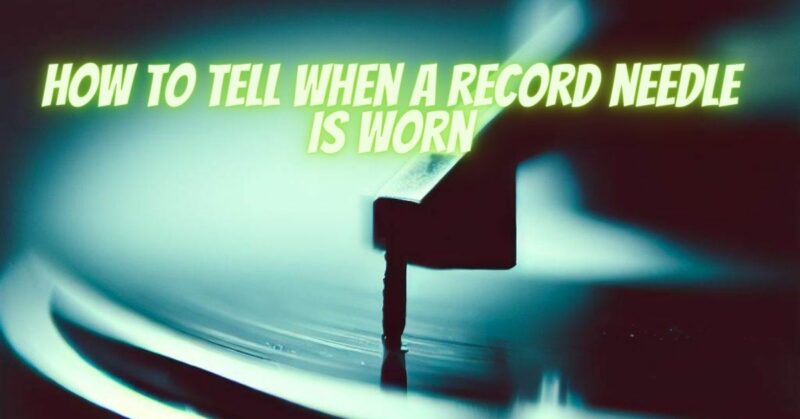The needle, also known as the stylus, is a crucial component of a turntable that comes into direct contact with the grooves of vinyl records. Over time, the needle can wear out due to regular use and friction. A worn needle can impact sound quality and potentially damage your vinyl collection. Knowing how to identify signs of a worn record needle is essential for maintaining optimal playback performance. In this article, we will discuss several indicators that can help you determine when it’s time to replace your record needle.
- Sound Quality:
One of the most noticeable signs of a worn record needle is a decline in sound quality. Pay attention to the audio reproduction during playback. If you observe a lack of clarity, distortion, muffled or fuzzy sound, or an overall decrease in audio fidelity, it may indicate that the needle is worn. A worn needle struggles to accurately track the record grooves, resulting in compromised sound reproduction.
- Surface Noise:
A worn record needle can introduce unwanted surface noise during playback. Listen for excessive crackling, popping, hissing, or static sounds that are not present in the original recording. Surface noise can be more prominent between tracks or during quiet passages. If you notice an increase in surface noise that persists across different records, it may be a sign of a worn needle.
- Skipping or Jumping:
If your turntable experiences frequent skipping or jumping across the record surface, it is a clear indication that the needle is worn and no longer properly tracking the grooves. Skipping occurs when the needle fails to stay in contact with the record, resulting in skipped sections of music or repetitive loops. Continuous skipping can also damage the record grooves over time.
- Visual Inspection:
Perform a visual inspection of the needle under good lighting conditions. Look for any visible signs of wear, such as a flattened or damaged stylus tip, bent cantilever (the thin arm holding the stylus), or uneven wear patterns. A worn needle may appear dull or worn-down compared to a new needle. If you notice any significant deterioration or damage, it’s time to consider replacing the needle.
- Age and Usage:
Consider the age and usage of the needle. Most needles have a recommended lifespan, which can vary depending on the quality of the needle and the amount of use it has undergone. If you have been using the same needle for an extended period or if it has accumulated several hundred hours of playback, it is likely nearing the end of its usable lifespan. Even if there are no obvious signs of wear, it’s advisable to replace the needle to ensure optimal performance.
- Record Preservation:
Using a worn needle can cause increased wear on your vinyl records, potentially damaging the grooves and reducing their lifespan. If you have a valuable or cherished vinyl collection that you want to preserve, it’s crucial to replace the needle regularly to minimize potential damage.
Conclusion:
Recognizing the signs of a worn record needle is vital for maintaining optimal playback quality and protecting your vinyl collection. Keep an ear out for changes in sound quality, increased surface noise, skipping or jumping during playback, and perform visual inspections to assess the condition of the needle. Consider the age and usage of the needle, as well as the importance of record preservation. By identifying the signs of a worn needle and taking timely action to replace it, you can ensure a superior listening experience and prolong the life of your vinyl records.


